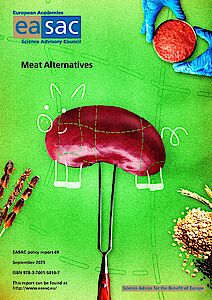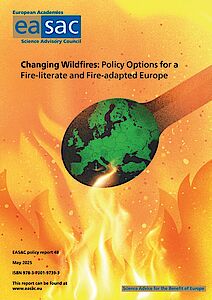Publications
Climate Change and Infectious Diseases in Europe
Climate exerts both direct and indirect effects on the appearance and spread of human and animal infectious diseases. The impact of climate change on the transmission and geographical distribution of vector-borne diseases, including zoonoses (infections transmissible between vertebrate animals and humans), has been associated with changes in the replication rate and dissemination of pathogen, vector and animal host populations, which are sensitive to changing temperature and rainfall. The available evidence indicates the potential for an increasing challenge to European public health from arboviral (arthropod-transmitted) diseases such as tick-borne encephalitis (TBE), West Nile fever (WNF), chikungunya, diseases caused by rodent-borne hanta viruses, and parasitic diseases such as dirofilariasis and leishmaniasis. Climate change is also increasing the threat of infections, such as bluetongue virus (BTV), in domesticated animals.
Although the evidence base is fragmented and it is also important to take account of the other various determinants of changes in ecosystems and in human, animal and microbial behaviour, the fundamental influence of climate change on infectious diseases in Europe is beginning to be discerned. And although the World Health Organization (WHO), the World Organisation for Animal Health (OIE) and the European Commission and its agencies are already active in monitoring and evaluating some infections, there is much more to be done to fill gaps in the evidence base, prepare public health authorities and raise the political profile of the issue, without being alarmist; to alert to the possible emergence of new threats as well as the expansion of diseases already present in Europe.
Our assessment of the available evidence, predominantly for vector-borne diseases, leads us to make several recommendations directed to EU and national decision-makers, with the objectives of identifying and supporting the necessary adaptation responses to what is unavoidable in climate change:
- It is vital to modernise surveillance, based on trans-European early warning systems that have the capability to integrate epidemiological and environmental data.
- This also requires integration of data collection and analysis for human and veterinary health, to include surveillance of wildlife populations and new molecular techniques to assess vectorial competence - the ability to transmit the infection.
- The health and environment research agendas should be co-ordinated to develop a broad understanding of key determinants of the spread of vector-borne disease. It is also important to integrate research in social and biological sciences to understand and quantify the human response to climate change. Research-funding agencies need to consult with the scientific community to develop a more strategic and sustained approach to define priorities and to train the next generation of researchers in the face of impending skills shortages in critical disciplines.
- Attending to the research gaps is only a first step in addressing the health risks of climate change. In addition, the growing evidence base must be used to inform the preparedness and responsiveness of public health systems and to develop better predictive modelling to allow more robust projections for future climate impact. It is equally essential to use the scientific outputs as a resource to sustain the search for new and better diagnostics, vaccines and therapeutics, and to ensure that science-based policy facilitates the best use of these innovative products and services for the benefit of human and animal health.
- The goals for the EU cannot be considered in isolation from the rest of the world. EU policy-makers must take account of the issues relating to climate change and infectious disease when progressing regional initiatives, for example for European Neighbourhood Policy and for the Euro-Mediterranean Union. EU actions in surveillance, research and innovation must also be appropriately integrated with global needs, priorities and strategies.
- Climate change is likely to affect human migrationas well as the mobility of animal hosts, vectors and pathogens. The potential future impact of climate change on human migration to the EU requires further study within the context of improving procedures to identify and quantify the current impact of migration on the infectious disease burden in Europe. In addition to filling these knowledge gaps, it is important to improve co-ordination of public health screening and follow-up practices for high-risk groups across Europe.

































